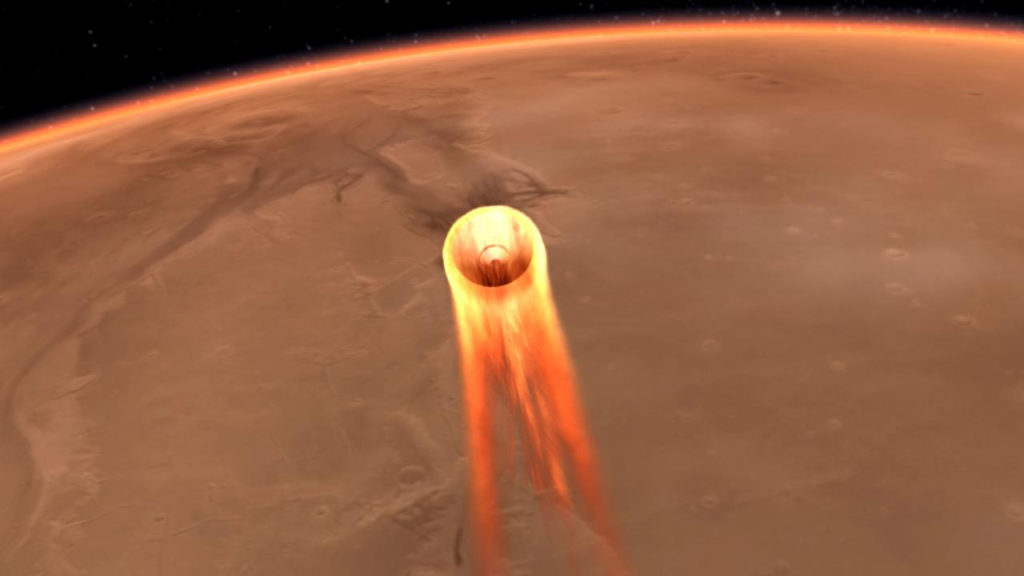
NASA’s Mars Interior Exploration using Seismic Investigations, Geodesy and Heat Transport (InSight) spacecraft is on track for a soft touchdown on the surface of the Red Planet on Nov. 26, the Monday after Thanksgiving. But it’s not going to be a relaxing weekend of turkey leftovers, football and shopping for the InSight mission team. Engineers will be keeping a close eye on the stream of data indicating InSight’s health and trajectory, and monitoring Martian weather reports to figure out if the team needs to make any final adjustments in preparation for landing, only five days away.
“Landing on Mars is hard. It takes skill, focus and years of preparation,” said Thomas Zurbuchen, associate administrator for the Science Mission Directorate at NASA Headquarters in Washington. “Keeping in mind our ambitious goal to eventually send humans to the surface of the Moon and then Mars, I know that our incredible science and engineering team — the only in the world to have successfully landed spacecraft on the Martian surface — will do everything they can to successfully land InSight on the Red Planet.”
InSight, the first mission to study the deep interior of Mars, blasted off from Vandenberg Air Force Base in Central California on May 5, 2018. It has been an uneventful flight to Mars, and engineers like it that way. They will get plenty of excitement when InSight hits the top of the Martian atmosphere at 12,300 mph (19,800 kph) and slows down to 5 mph (8 kph) — about human jogging speed — before its three legs touch down on Martian soil. That extreme deceleration has to happen in just under seven minutes.
“There’s a reason engineers call landing on Mars ‘seven minutes of terror,'” said Rob Grover, InSight’s entry, descent and landing (EDL) lead, based at NASA’s Jet Propulsion Laboratory in Pasadena, California. “We can’t joystick the landing, so we have to rely on the commands we pre-program into the spacecraft. We’ve spent years testing our plans, learning from other Mars landings and studying all the conditions Mars can throw at us. And we’re going to stay vigilant till InSight settles into its home in the Elysium Planitia region.”
One way engineers may be able to confirm quickly what activities InSight has completed during those seven minutes of terror is if the experimental CubeSat mission known as Mars Cube One (MarCO) relays InSight data back to Earth in near-real time during their flyby on Nov. 26. The two MarCO spacecraft (A and B) are making good progress toward their rendezvous point, and their radios have already passed their first deep-space tests.
